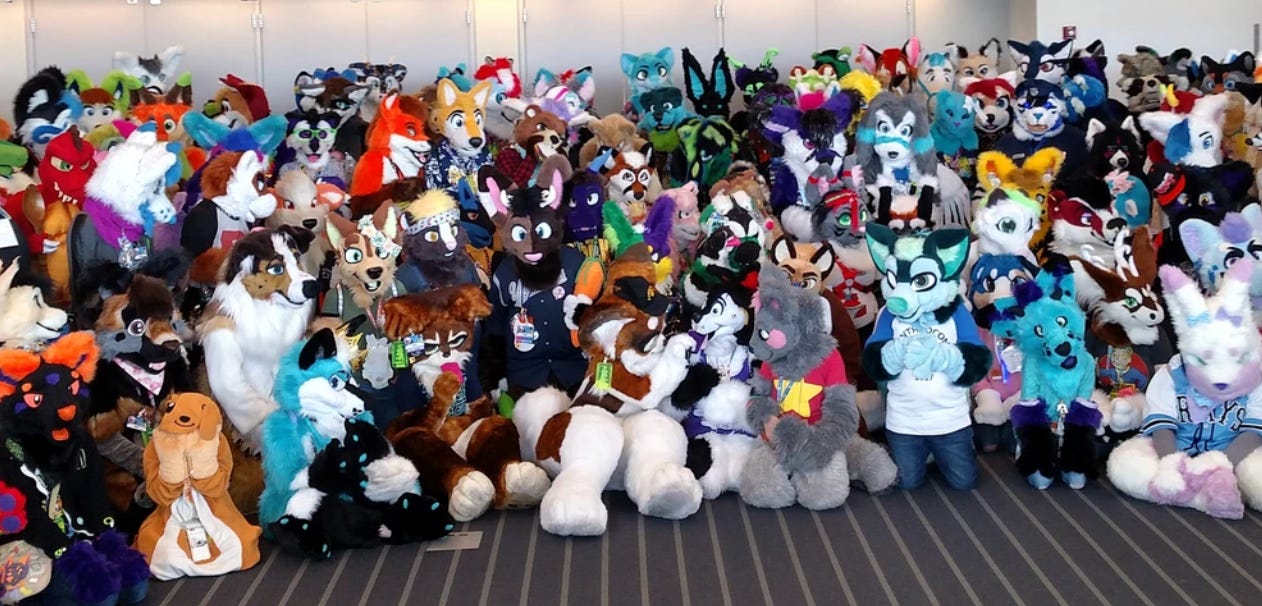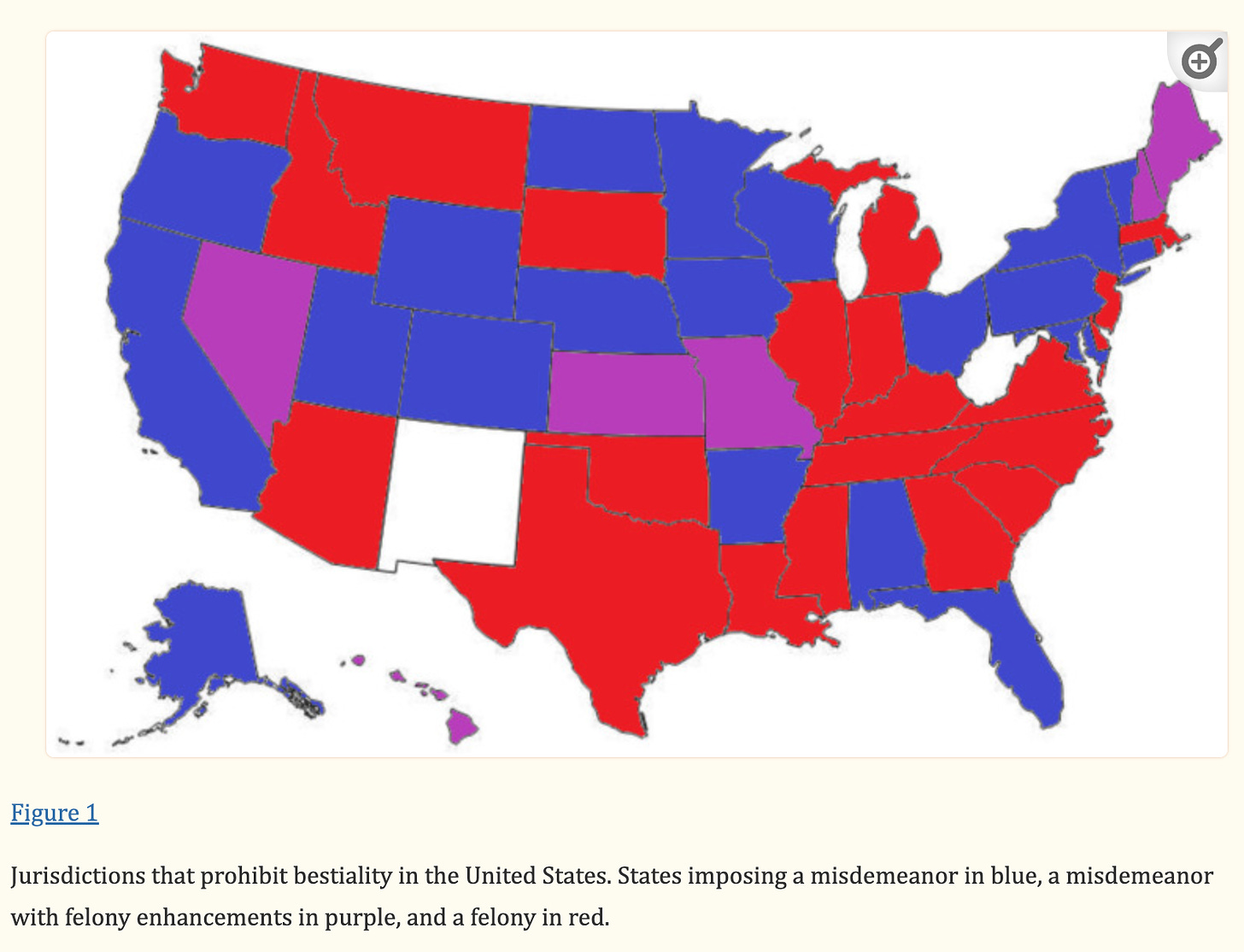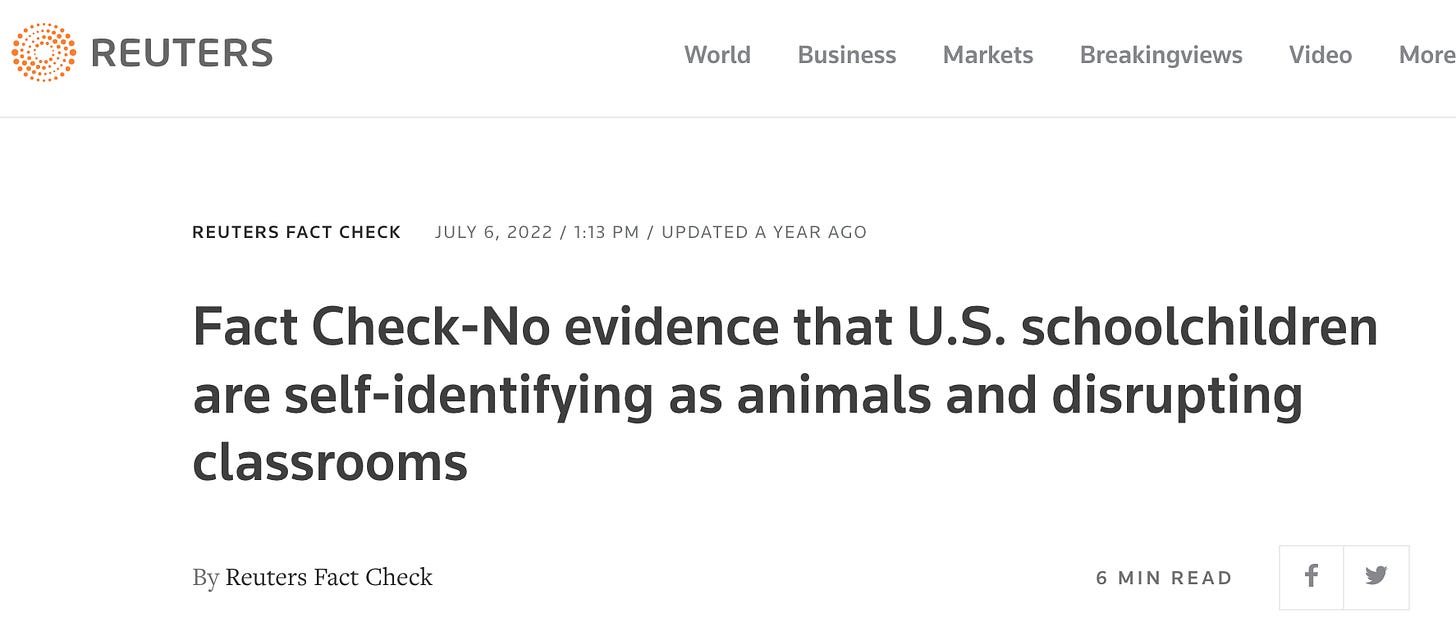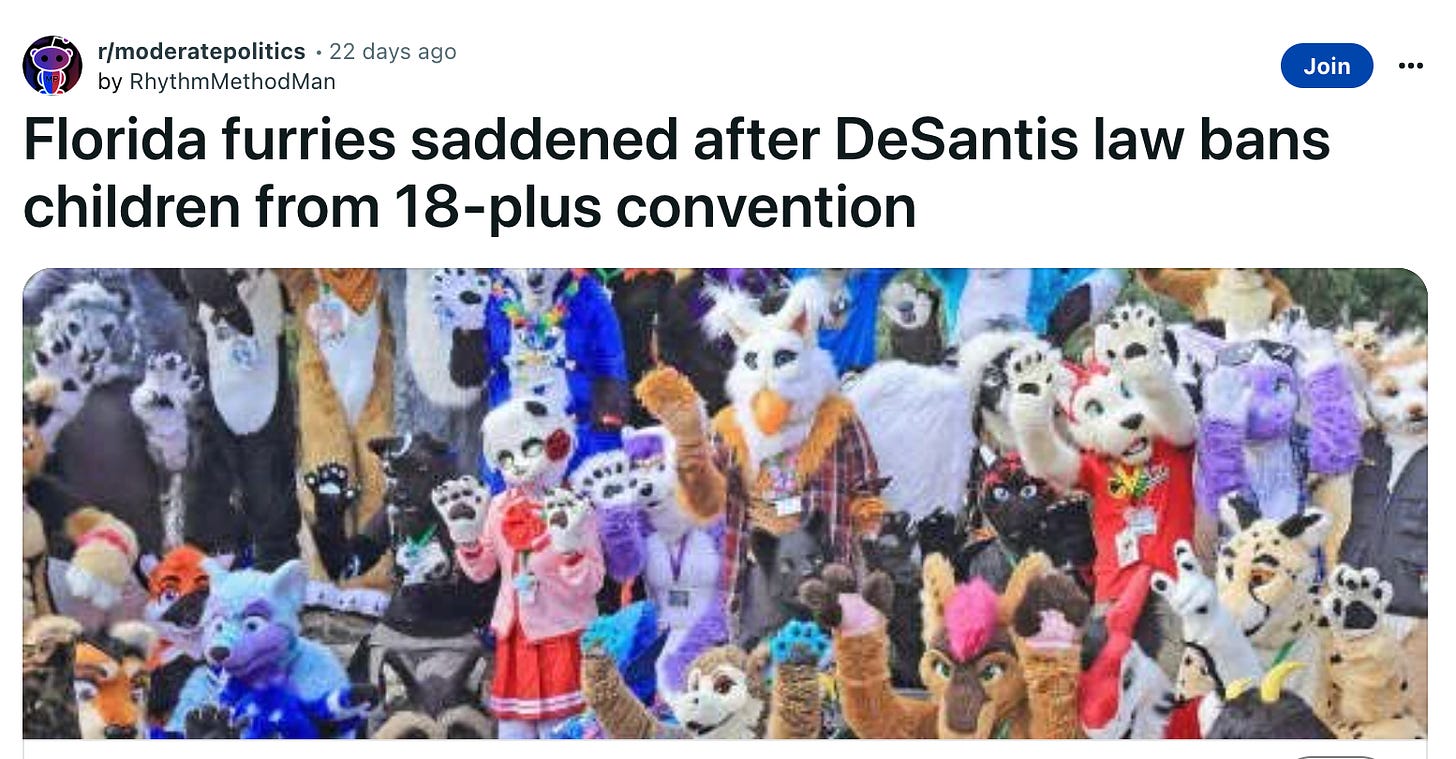Mythical or real?

It is a fact that children love to role-play. That role-playing has many positive benefits: including learning empathy, providing an emotional outlet, and working out complex social relationships/cultural norms. There is nothing inherently bad about role-playing.
What is a furry?
Many people like to describe furries as “fans” – just kids who like to dress up as their favorite animal character. Unfortunately, this definition is not based on reality.
Furries can be something else all together. In adults, most furries tend to be male and two-thirds identify as homosexual. Furries are often truly attracted to animals (which would be type of sexual fetishism). Sexual fetishism is a sexual fixation on a nonliving object, animal or non-genital body part.
How are sexual fetishes formed? Many social scientists believe that a “critical period exists during an individual’s early sexual experience that creates a “love map” or Gestalt of features, movements, feelings, and interpersonal interactions associated with sexual reward. ” Sexual “fetishism could result from these abnormal early sexual experiences, when a “child is imprinted with an overly narrow or incorrect concept of a sex object” (Wiki).
This of course, is a tacit admission that imprinting, grooming, sexual abuse and early sexual experiences can impact on a person’s lifelong sexual preferences and behaviors.
A recent paper highlights some of the features shared by furries:
The “Furry” Phenomenon: Characterizing Sexual Orientation, Sexual Motivation, and Erotic Target Identity Inversions in Male Furries
Archives of Sexual Behavior volume 48, pages1349–1369 (2019)
“We surveyed 334 male furries recruited from the Internet about their sexual orientation, sexual motivation, and sexual interests. A large majority of our sample reported non-heterosexual identities (84%) and some degree of sexual motivation for being furries (99%). Male furries also tended to report a pattern of sexual interests consistent with an ETII (Erotic Target Identity Inversion) involving anthropomorphic animals. Both sexual attraction to anthropomorphic animals and sexual arousal by fantasizing about being anthropomorphic animals were nearly universal. Furthermore, male furries tended to be sexually aroused by fantasizing about being the same kinds of anthropomorphic animals to whom they were sexually attracted, with respect to gender and species.”
An anthropomorphic animal is nothing more than an animal that a human attributes human characteristics to. Therefore, the above quoted text could read: “sexual attraction to animals and sexual arousal by fantasizing about being animals were nearly universal”. Another word for being sexual attracted to animals, if acted upon is bestiality, which is generally considered illegal in almost all of the states.

Why does this matter?
I did a brief survey of parents with school aged-children that I know and every single parent said that their child’s school had children acting as furries and that it has been normalized in the schools.
Which brings us to the “all knowing” fact-checkers.

Reuters does a sneaky thing in this fact-check. Note the wording: “children identifying as animals and disrupting classrooms.” That phrase “and disrupting” is always placed as context through out the article. Because “furries” are now very common in schools throughout the USA and Reuters knows it.
So common that Gov. DeSantis is working hard to stop the spread of this behavioral pathogen.

At least in the UK, newspapers are being more honest about this growing and disruptive trend in school-aged children.
Schools let children identify as horses, dinosaurs… and a moon
June 19, 2023 The Daily Telegraph
Difficult as it may be to believe, children at a school in East Sussex were reprimanded last week for refusing to accept a classmate’s decision to self-identify as a cat.
The Year 8 pupils were told they would be reported to a senior leader after their teacher said they had “really upset” the fellow pupil by telling them: “You’re a girl.”
The incident at Rye College, first reported by The Daily Telegraph yesterday, was not a one-off. Inquiries by this newspaper have established that other children at other schools are also identifying as animals, and the responses of parents suggest that the schools in question are hopelessly out of their depth on the question of how to handle the pupils’ behaviour.
Another article wishes to convince the reader that furries are nothing more than children involved in role-playing or cos-play. That this is all very natural.
Have you heard of cosplay, where people costume as characters? They might dress up as a storm trooper or superhero and attend a comic book convention to have fun with friends. Furries do a similar thing, but with a twist.
Furries are people who have an interest in anthropomorphism, which specifically refers to giving human characteristics to animals. In its most distilled form, furries are a group of people who formed a community—or fandom—because they have a common interest in anthropomorphic media, friendships and social inclusion.
About 95 percent of furries develop their own unique avatar-like character called a fursona. The product of deep reflection, fursonas can represent idealized versions of the self that are imbued with positive characteristics, like being sociable, funny and less anxious.
Fursonas can be a safe, functional way for furries to explore who they are as people, including their gender identity and sexual orientation. Research also indicates that a fursona can help facilitate interactions with others and result in more social confidence.
This all so very normal?
Well, actually no. It isn’t normal. Not at all.
This is not cos-play or role-play. This is about self-identity. These children are building an image of themselves in their minds that will last through a lifetime. Why would parents and schools allow such behaviors to go unchecked? Behavior that is being groomed by others. Remember, sexual fetishes are learned early.
Where does this lead to? At a “typical” gay pride parade, the furries abound. Look at the image below. What are the children marching behind those men, who are acting as sexualized canine objects going to remember from this experience? How will it impact them later in life?

The problem is that main-stream media wishes to make adolescent furries seem “nice and respectable.” That it is just a “fun” role-playing “game” some children are involved in, such as in this Rolling Stones article.
The problem is that this defies what we know about sexual fetishes. How they start, develop and what being a furry might mean for the future of a young boy, who dresses up as a dog. A boy who might be encouraged by his peers and internet activities to think of dogs as sexual objects.
What we know about self-identity and the stages of human development should make every parent and school enabling this trend to re-evaluate their own responses immediately. What is happening is not ok.
From a Vice article, titled “How the Furry Community Became a Safe Space for Youth” (2017), it is clear that many parent (and teachers) don’t have a clue about the role of a parent or a role-model in handling a child who wishes to be a furry. They seem to also be unclear of what constitutes a “safe space”, because the furry community isn’t it! Below is a quote from that article:
“But what do you mean you are a furry?” I asked.
She showed me drawings she’d been making for an imagined fursuit and photos of furries. “I’ve finally found people like me,” she said. “When I was little and played house, I never wanted to be the mom or dad or sister. I was the dog or the cat.” Her face glowed with enthusiasm.
“But the sex thing?” I said.
“No superficial judgments. You support me in everything else,” she said. “Why not support me in being an animal?” Schooled by my own kid.
She was right: My job as her mother is to support her purpose and joy, so we jumped into furry fandom together
The expanding youth furry movement seems to be driven in large part by TikTok, where adolescent furry influencers abound and have huge followings.
The video below is all about the world of furries on TikTok. Where making a furry world seems bright and shiny and normal. But the truth is, that in the long-term, it is none of those things.
The world is a hard enough place to navigate without the need to permanently self-identify as an animal and then be driven as an adult to act out bizarre fantasies, which are most likely illegal and dangerous. Not to mention morally reprehensible.
Children indulging in the furry world may seem cute and even innocent. But don’t be fooled. Children acting as furries are being exposed to concepts, images and videos that are dangerous and sick. Children can be easily influenced by social media in ways that are extremely harmful to their psyche and their soul.
The truth is that children do grow up and then what?
Common sense isn’t common anymore.
Disclaimer: We at Prepare for Change (PFC) bring you information that is not offered by the mainstream news, and therefore may seem controversial. The opinions, views, statements, and/or information we present are not necessarily promoted, endorsed, espoused, or agreed to by Prepare for Change, its leadership Council, members, those who work with PFC, or those who read its content. However, they are hopefully provocative. Please use discernment! Use logical thinking, your own intuition and your own connection with Source, Spirit and Natural Laws to help you determine what is true and what is not. By sharing information and seeding dialogue, it is our goal to raise consciousness and awareness of higher truths to free us from enslavement of the matrix in this material realm.
 EN
EN FR
FR

































